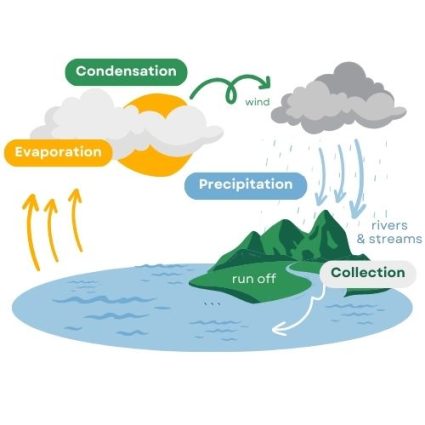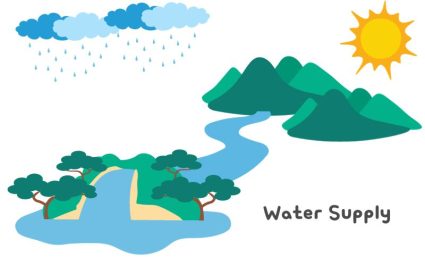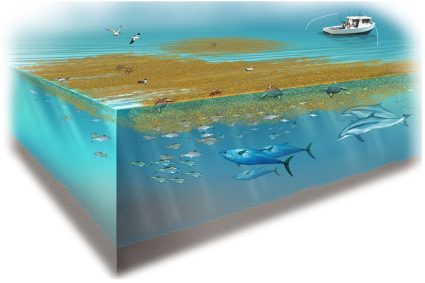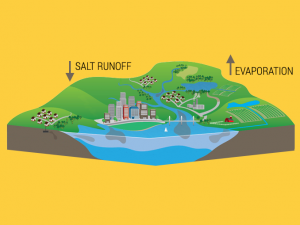The Hydrosphere: A Deep Dive into Earth’s Water

What is the Hydrosphere?
The hydrosphere is a vast and dynamic system of all things watery. In fact, the hydrosphere covers about 71% of our planet’s surface.
From the deepest oceans to the tiniest droplets in clouds, the hydrosphere supports life as we know it. But it does more than that…
The hydrosphere influences climate, shapes landscapes, and supports our planet’s ecology.
Today, let’s dive into the watery world of the hydrosphere. What are its components? And how is it all connected?
Examples of the Hydrosphere
The first thing you should know is that the hydrosphere isn’t just about the 5 oceans of Earth.

Although oceans are the largest in volume, the hydrosphere consists of all forms of water. So that includes liquid, solid (ice), and gas (water vapor).
This means rivers, lakes, glaciers, groundwater, and even the moisture in the air are all part of this intricate system.
Let’s break down each of these components of the hydrosphere with a bit more detail.
1. Oceans

Oceans are a major part of the hydrosphere because they are the largest bodies of water on our planet. They cover over two-thirds of the Earth’s surface, regulating climate and supporting marine life.
Oceans play a crucial role in regulating the Earth’s climate. They absorb heat from the sun and distribute it around the planet through ocean currents.
Finally, oceans are an integral part of the water cycle. Water evaporates from the ocean surface and forms clouds. Eventually, water falls as precipitation. Some of which return to the oceans.
2. Water Vapor

Water vapor is the gaseous form of water in the atmosphere. It’s a key part of the water cycle, contributing to clouds and precipitation.
Water vapor is a greenhouse gas, which means it helps trap heat in the atmosphere. This regulates Earth’s temperature, making it a vital component in the planet’s climate system.
Finally, water vapor helps distribute water around the globe. It can travel far in the atmosphere before condensing and falling as precipitation.
3. Groundwater

Groundwater is water found beneath the Earth’s surface, filling the spaces in soil and rocks. People use groundwater for drinking water and plays an important role in ecosystems.
Although a lot of places rely on drawing groundwater from wells, we use it for agriculture to irrigate crops and sustain livestock.
Finally, groundwater is connected to surface water (like rivers and lakes). It can flow into these bodies of water, and conversely, surface water can replenish groundwater.
4. Rivers & Tributaries

Rivers and their smaller streams, tributaries, are freshwater flowing across land. They transport water, nutrients, and sediments, linking ecosystems.
Rivers interact with other parts of the Earth’s system. This includes the atmosphere (air), lithosphere (land), and biosphere (living things). This has effects on weather patterns, erosion, and supporting marine life.
Overall, rivers act as natural channels that connect different parts of the hydrosphere. They often start in higher elevations, like mountains, and flow into larger bodies of water such as lakes, seas, or oceans.
5. Glaciers

Glaciers are large masses of ice on land, formed from compacted snow. They store fresh water and are Earth’s largest reservoir of fresh water.
During periods of warming, glaciers slowly release water. In turn, this can affect rising sea levels, contributing to the gradual increase in ocean volumes worldwide.
Now, you know that glaciers store large amounts of water as ice. But glaciers also help regulate the climate by reflecting sunlight into the atmosphere due to their bright surfaces.
6. Lakes

Lakes are inland bodies of water, usually freshwater. They provide habitat for many species and are sources of water for human use.
Lakes can influence local climates. For example, large lakes moderate the temperature of surrounding areas. Then, this contributes to local weather patterns.
Finally, lakes are crucial for us, humans. They provide water for drinking, irrigation, and recreation. However, human activities can impact lakes through eutrophication altering water pollution. The hydrosphere also encompasses the world’s longest freshwater lake, Lake Tanganyika, as part of its vast system.
7. Seas

Seas are interconnected with the world’s oceans and also interact with land. They receive freshwater from rivers and runoff, and their coastlines are dynamic areas where land and sea meet.
Similar to lakes, seas have a role in the water cycle, climate regulation, and ecosystem biodiversity.
Seas are important for human activities. They provide resources like fish and minerals, routes for transportation and trade, and tourism. Just remember that seas are different from oceans as they are smaller and often partly enclosed by land.
Why the Hydrosphere is Important
The hydrosphere is incredibly important for several reasons. Firstly, it is essential for life. It circulates water, which is essential for all forms of life. Without the hydrosphere, Earth would not be able to support life.
Secondly, the hydrosphere plays a key role in the Earth’s climate. Just like an air conditioning system, it regulates temperatures. For instance, the oceans and seas absorb heat from the sun and distribute it around the planet. Overall, this helps to maintain a balanced climate.
Finally, the hydrosphere is vital for human activities. We use water for drinking, agriculture, and even for generating electricity through hydropower. Waterways are important for transportation and trade, connecting different parts of the world.
Can you think of any other ways that the hydrosphere impacts us? We’d love to hear from you in the comments section below.















What’s your question? We’d be happy to help out
this did not help at all I had a totally different question.